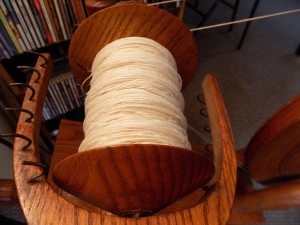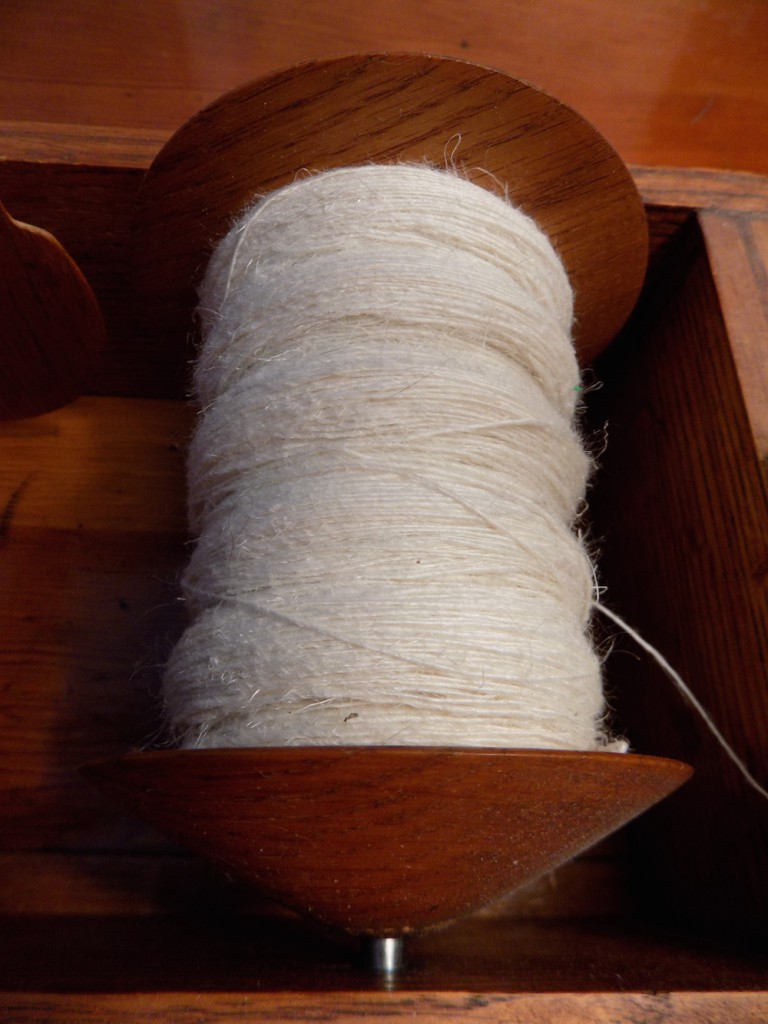Thanks to more snow days than usual this winter, I have finally finished spinning up a fiber preparation I bought years ago, 8 ounces of Louet bleached flax top. I have not spent much time on spinning in recent years, hence the delay. My plan was to experiment with wet-spinning and dry-spinning the fiber, to see if it made a significant difference in the yarn. I think it did.
“Top” is a term usually used to describe a fiber preparation in which all the fibers are aligned parallel to each other. It makes for smooth, comparatively dense yarns. I would describe this fiber as tow, due to the fact that the fibers are short and of varying diameter. Here’s a photo of a little sample of it.
I spun about half of the fiber wet, which means I dipped my fingers in water periodically while I was spinning. I drafted with my right hand, and dipped my left hand into the water. My left hand was closer to the orifice, which is the little hole in your spinning wheel where the yarn goes onto the bobbin. Wet fingers help to smooth down the fibers between the drafting zone and the orifice of the spinning wheel. I tried to introduce the water into the far edge of the drafting zone (on the yarn side) but keep it from getting into the main part of the drafting zone. If the water gets too far up into the untwisted fibers they get gunky, stick together, and then it’s hard to pull them apart to draft smoothly. Here’s the bobbin of wet-spun yarn:
You can see that it’s fairly smooth. The diameter is approximately comparable to a 20/2 linen yarn, though mine is only singles. In the linen-spinning world, my yarn is pretty coarse.
With the dry-spun yarn I just treated it like wool and spun as I normally would. Here’s the bobbin of dry-spun yarn:
It is hairier or fuzzier looking than the wet-spun. It is not significantly different in color, despite the photo. Both yarns are a bright bleached white.
I plan to leave them white and weave with them as singles in the weft.



